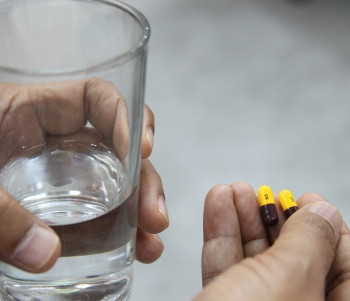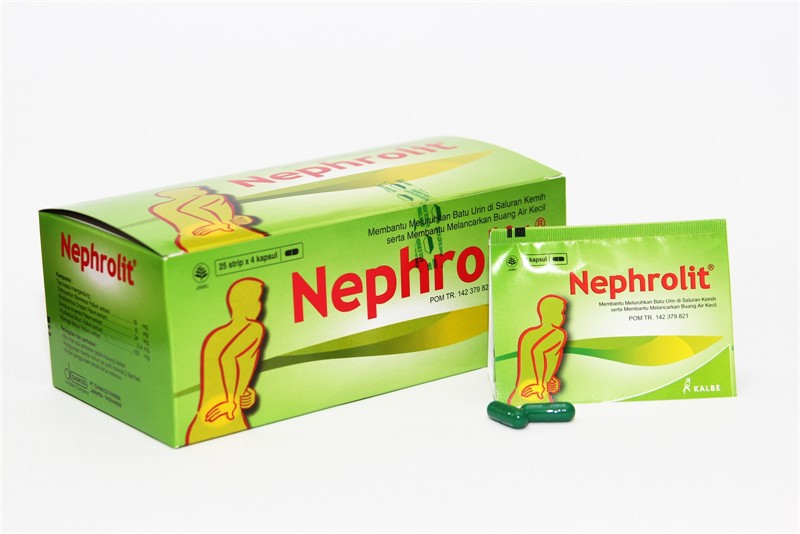Nefrolitiasis (Batu Ginjal)
Pendahuluan dan Fakta
Nefrolitiasis (batu ginjal) merupakan suatu keadaan dimana terdapat satu atau lebih batu di dalam pelvis atau kaliks dari ginjal. Secara garis besar pembentukan batu ginjal dipengaruhi oleh faktor intrinsik dan ekstrinsik. Faktor intrinsik yaitu umur, jenis kelamin, dan keturunan, sedangkan faktor ekstrinsik yaitu kondisi geografis, iklim, kebiasaan makan, zat yang terkandung dalam urin, pekerjaan, dan sebagainya. Di Indonesia sendiri, penyakit ginjal yang paling sering ditemui adalah gagal ginjal dan nefrolitiasis. Prevalensi tertinggi penyakit nefrolitiasis yaitu di daerah DI Yogyakarta (1,2%), diikuti Aceh (0,9%), Jawa Barat, Jawa Tengah , dan Sulawesi Tengah masing-masing (0,8%).
Patofisiologi
Nefrolitiasis berdasarkan komposisinya terbagi menjadi batu kalsium, batu struvit, batu asam urat, batu sistin, batu xanthine, batu triamteren, dan batu silikat. Pembentukan batu pada ginjal umumnya membutuhkan keadaan supersaturasi. Namun pada urin normal, ditemukan adanya zat inhibitor pembentuk batu. Pada kondisi-kondisi tertentu, terdapat zat reaktan yang dapat menginduksi pembentukan batu. Adanya hambatan aliran urin, kelainan bawaan pada pelvikalises, hiperplasia prostat benigna, striktura, dan buli bulineurogenik diduga ikut berperan dalam proses pembentukan batu.
Batu terdiri atas kristal-kristal yang tersusun oleh bahan-bahan organik ataupun anorganik yang terlarut dalam urin. Kristal-kristal tersebut akan tetap berada pada posisi metastable (tetap terlarut) dalam urin jika tidak ada keadaan-keadaan yang menyebabkan presipitasi kristal. Apabila kristal mengalami presipitasi membentuk inti batu, yang kemudian akan mengadakan agregasi dan menarik bahan-bahan yang lain sehingga menjadi kristal yang lebih besar. Kristal akan mengendap pada epitel saluran kemih dan membentuk batu yang cukup besar untuk menyumbat saluran kemih sehingga nantinya dapat menimbulkan gejala klinis.
Gejala Klinis dan Komplikasi
Penderita nefrolitiasis sering mendapatkan keluhan rasa nyeri pada pinggang ke arah bawah dan depan. Nyeri dapat bersifat kolik atau non-kolik. Nyeri dapat menetap dan terasa sangat hebat. Mual dan muntah sering hadir, namun demam jarang di jumpai pada penderita. Dapat juga muncul adanya bruto atau mikrohematuria.
Diagnosis
Selain dari keluhan khas yang didapatkan pada penderita nefrolitiasis, ada beberapa hal yang harus dievaluasi untuk menegakkan diagnosis, yaitu:
1. Evaluasi skrining yang terdiri dari sejarah rinci medis dan makanan, kimia darah, dan urin pada pasien.
2. Foto Rontgen Abdomen yang digunakan untuk melihat adanya kemungkinan batu radio-opak.
3. Pielografi Intra Vena yang bertujuan melihat keadaan anatomi dan fungsi ginjal. Pemeriksaan ini dapat terlihat batu yang bersifat radiolusen.
4. Ultrasonografi (USG) dapat melihat semua jenis batu.
5. CT Urografi tanpa kontras adalah standar baku untuk melihat adanya batu di traktus urinarius.
Pengobatan dan Perawatan
Tujuan utama tatalaksana pada pasien nefrolitiasis adalah mengatasi nyeri, menghilangkan batu yang sudah ada, dan mencegah terjadinya pembentukan batu yang berulang.
1. ESWL (Extracorporeal Shockwave Lithotripsy). Bekerja dengan menggunakan gelombang kejut yang dihasilkan di luar tubuh untuk menghancurkan batu di dalam tubuh. Batu akan dipecah menjadi bagian-bagian yang kecil sehingga mudah dikeluarkan melalui saluran kemih.
2. PCNL (Percutaneus Nephro Litholapaxy), merupakan salah satu tindakan endourologi untuk mengeluarkan batu yang berada di saluran ginjal dengan cara memasukan alat endoskopi ke dalam kalises melalui insisi pada kulit. Batu kemudian dikeluarkan atau dipecah terlebih dahulu menjadi fragmen-fragmen kecil.
3. Bedah terbuka, untuk pelayanan kesehatan yang belum memiliki fasilitas PNL dan ESWL, tindakan yang dapat dilakukan melalui bedah terbuka.
4. Terapi Konservatif atau Terapi Ekspulsif Medikamentosa (TEM). Terapi dengan mengunakan medikamentosa ini ditujukan pada kasus dengan batu yang ukuranya masih kurang dari 5 mm, dapat juga diberikan pada pasien yang belum memiliki indikasi pengeluaran batu secara aktif.
Referensi:
Fauzi A, Putra MMA. Nefrolitiasis. Majority 2016:5(2):69-73


















